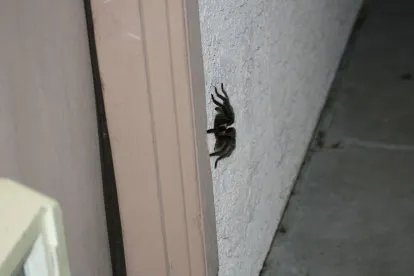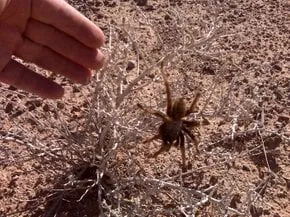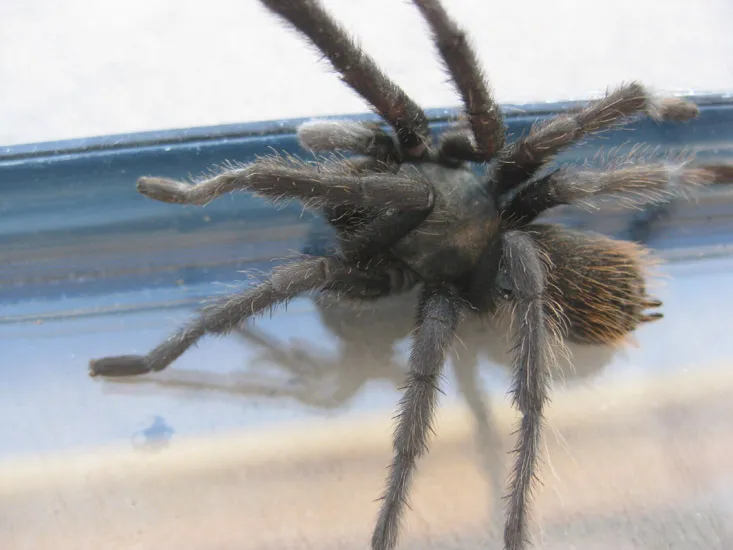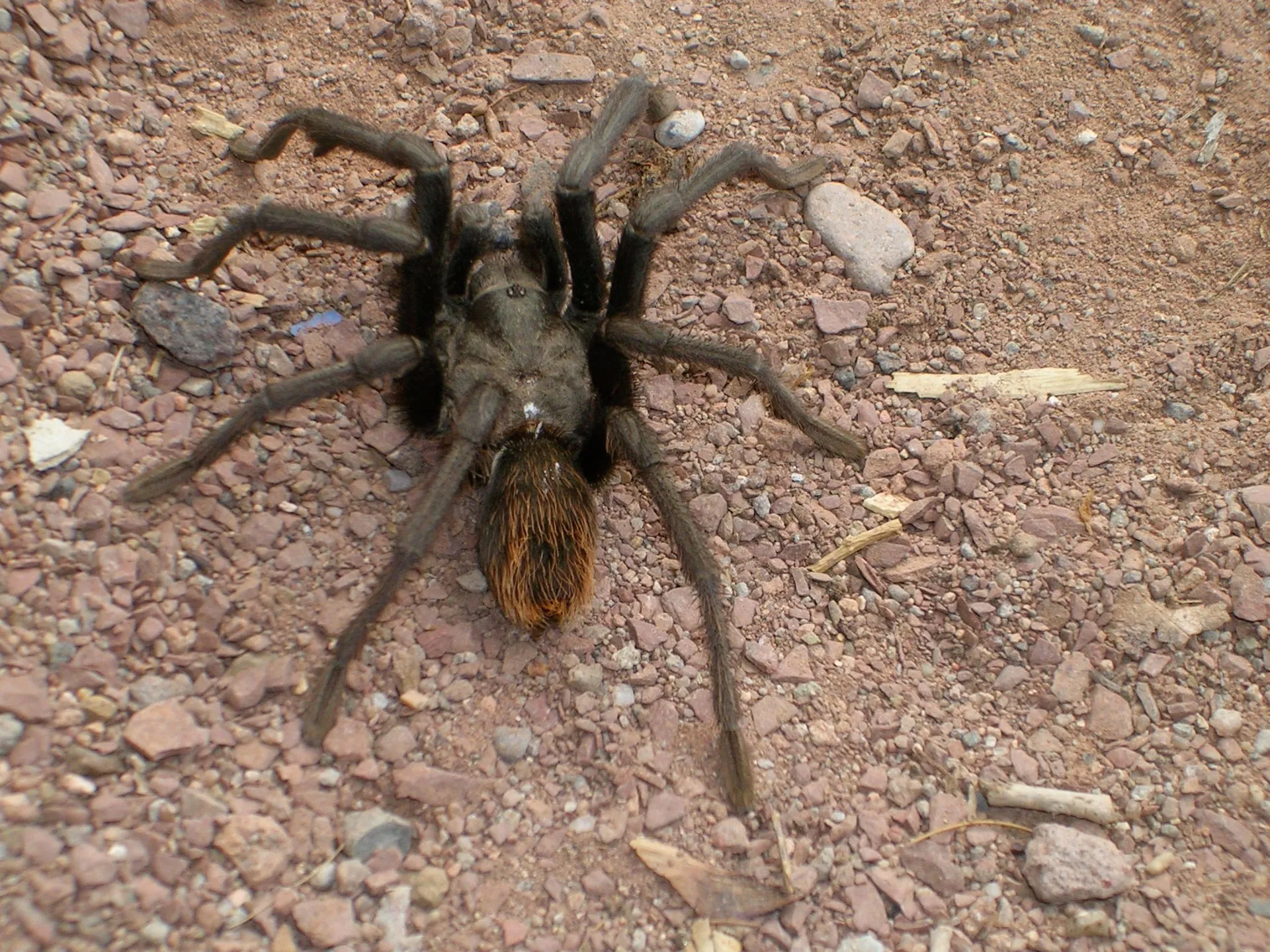What is Tarantula Migration
Tarantula migration is an annual event where these large, hairy spiders embark on a journey, typically during the late summer and early fall. This fascinating phenomenon, particularly visible in regions like Arizona, is primarily driven by the tarantulas’ breeding cycle. It involves male tarantulas leaving their burrows in search of a mate, often resulting in a mass movement across open landscapes. The migration is a critical part of their life cycle, influencing population dynamics and the overall health of the tarantula community. During this period, the spiders become much more visible as they actively move, increasing the chance of encounters with both humans and other wildlife. The timing and duration of the migration can vary slightly depending on environmental factors, making each year’s spectacle unique.
Why Tarantulas Migrate
The primary reason tarantulas migrate is to reproduce. Adult male tarantulas, after reaching maturity, leave their burrows to find a receptive female. They do this because they cannot reproduce within their own burrows. The females, who typically remain in their burrows, release pheromones to attract males. The males then follow these chemical signals, sometimes traveling considerable distances. This migration is essential for maintaining genetic diversity within the tarantula population and ensuring the continuation of the species. The entire process is dictated by the need to propagate the species, with males facing significant risks during their journey.
The Breeding Season and Migration

The breeding season and, subsequently, the migration period for Arizona tarantulas generally aligns with late summer and early fall, usually between August and October. This timing is linked to the environmental conditions, such as temperature and humidity, that are optimal for mating. The warmer temperatures encourage the spiders to be more active and facilitate the dispersal of pheromones. During this time, the males become highly active, leaving their burrows to seek out mates. The females, which remain in their burrows, wait for the arrival of suitable males. Successful mating is crucial for the next generation, marking the end of the migration for the males, often with a tragic outcome for the male.
Where to Witness the Arizona Tarantula Migration
Witnessing the Arizona tarantula migration can be a unique experience. The best locations to observe this event are often in the open desert landscapes where the tarantulas are commonly found. Areas with less vegetation and open ground provide better visibility of the spiders as they move. Roadsides, trails, and open fields are ideal locations to spot the migrating tarantulas. However, it’s essential to be cautious and respectful of their habitat. Remember that these spiders are wild animals and should be observed from a safe distance. When observing the migration, always prioritize the safety of the tarantulas and the people watching. Choose an area with few people to observe safely.
Key Locations for Observation
Prime locations for observing the tarantula migration in Arizona include areas near Phoenix, Tucson, and other regions with suitable desert habitats. Trails and open areas such as the McDowell Mountain Regional Park near Phoenix, or the trails in Sabino Canyon near Tucson, are known to be favorable. Always check local conditions before heading out, as the precise locations and the timing of the migration can vary based on the weather conditions. Consider visiting during the late afternoon or early evening, when the spiders are most active. Be sure to stay on marked trails to avoid disturbing the natural habitat and to protect yourself and the spiders.
Optimal Time for Migration

The best time to witness the Arizona tarantula migration is typically during the late afternoon and early evening. During these cooler hours, tarantulas are most active as they search for mates. The timing can also depend on the weather conditions, with migrations often peaking after rain or during periods of high humidity. Watching for the migration is most effective during the peak breeding season from August to October. Always check weather forecasts and local reports to determine the best time to observe the migration, ensuring that you optimize your chances of seeing these remarkable creatures in action. Remember to bring a flashlight or headlamp to help spot them as the sun goes down.
What to Expect During Migration
During the Arizona tarantula migration, you can expect to see male tarantulas actively moving across open areas, often in search of a mate. They may be seen walking along roads, trails, or in open fields. These spiders, which are typically nocturnal, may be visible during the day, particularly on overcast days or during the early and late hours of the day. The males are easily recognizable due to their larger size and their behavior of actively seeking out females. Be patient and observe carefully, as the spiders can sometimes be difficult to spot. You might also observe females waiting for the males in their burrows.
Behaviors and Activities
The behaviors and activities of tarantulas during migration are focused on reproduction. Male tarantulas will actively search for females, sometimes walking for long distances. They may display courtship rituals, such as drumming on the ground or tapping the female’s burrow entrance to attract her attention. Once a male finds a female, he will attempt to mate with her, which is a risky endeavor for the male, as the female might consider him a meal. The female, after mating, will lay eggs and protect them in her burrow. Observe these behaviors from a distance to avoid disturbing the process. The male tarantulas often face many dangers during their journeys, including predators and vehicles.
Safety Precautions for Observers

When observing the Arizona tarantula migration, it’s important to take safety precautions. Always maintain a safe distance from the spiders, and never try to handle them. Wear closed-toe shoes and long pants to protect yourself from potential bites. Be aware of your surroundings, and watch out for other wildlife such as snakes or scorpions. It is important to avoid walking on roads or trails at night and use a flashlight or headlamp. Always inform someone of your plans and the location where you intend to go, especially if you’re venturing out alone. If you have any allergic reactions, carry an epinephrine auto-injector with you.
Tips for Safe Viewing
To ensure safe viewing of the tarantula migration, stay on marked trails and avoid disturbing the spiders or their habitat. Use binoculars to observe the tarantulas from a distance, and bring a camera with a zoom lens to capture the experience. Avoid touching or provoking the tarantulas, as they may bite if they feel threatened. Be mindful of the weather conditions, and bring water and sunscreen. If you are driving, reduce your speed and watch out for tarantulas crossing the road, especially at dusk and dawn. Remember that respecting their natural habitat is essential. Leave no trace behind, and pack out everything you bring in.
Shocking Fact 1 The Sheer Numbers
One of the most shocking aspects of the Arizona tarantula migration is the sheer number of spiders involved. During peak migration season, the landscape can become peppered with thousands of tarantulas. This mass movement is a testament to the species’ reproductive drive and can be an overwhelming sight for observers. Seeing so many tarantulas in one location highlights the abundance of these creatures in their natural habitat. The collective migration of the spiders is a visually impressive spectacle, especially during the late afternoon and early evening. The sight of so many tarantulas moving across the terrain is genuinely surprising and demonstrates the robust tarantula population in the region.
Shocking Fact 2 The Timing of the Trek

The precise timing of the tarantula migration is another fascinating and shocking fact. The migration’s commencement is closely tied to environmental conditions, such as temperature and rainfall. The event is not a fixed date, but instead, it’s dictated by the environmental cues that trigger the mating season. This intricate timing is essential for successful reproduction, ensuring that males and females are active simultaneously. The unpredictability of the exact start and duration of the migration adds to the excitement. The timing is a critical aspect of their survival, a testament to their adaptation to their environment. Each year, the specific timing can vary slightly, making each migration a unique event.
Shocking Fact 3 The Males’ Dangerous Journey
The male tarantulas’ journey during migration is incredibly dangerous. They are vulnerable to numerous predators, including birds, reptiles, and other mammals. The males’ single-minded focus on finding a mate makes them less cautious and more exposed to threats. Their journey often requires them to cross open ground, making them easily visible to predators. Furthermore, the males are at risk from human activity, such as cars on roads. The dangers faced by the male tarantulas highlight the sacrifices required for their species’ survival. This perilous journey underscores the resilience and the urgency of their reproductive efforts.
Shocking Fact 4 The Predators
Another shocking aspect is the array of predators that prey on migrating tarantulas. Birds of prey, coyotes, lizards, and even other tarantulas pose a threat to the migrating males. The mass movement of tarantulas attracts predators, creating a feeding frenzy in certain areas. The constant threat from predators highlights the risks these spiders face during the migration period. This increases the mortality rate of the males and reduces the chances of mating. The predator-prey relationships within the desert ecosystem are on display during the migration season, making it a fascinating, yet sometimes grim, spectacle to witness.
Shocking Fact 5 The Mating Ritual

The mating ritual itself is a shocking and intricate process. After a male finds a female, he must approach her cautiously, often drumming on the ground or tapping her burrow entrance. The male must then insert his pedipalps, which contain the sperm, into the female. The female may attack the male if she doesn’t want to mate, or she could attack him after mating. The mating ritual is a tense and often short-lived encounter. This delicate balance is crucial for the continuation of the species. The unique behaviors involved in the mating process make it one of the most intriguing aspects of the migration.
Conservation Status and Threats
While Arizona tarantulas are not currently considered endangered, they face several threats that could impact their conservation status. Habitat loss due to urbanization and development is a major concern. Pesticide use and climate change also pose challenges to their survival. It is important to understand these threats to ensure the long-term survival of tarantula populations. Efforts to conserve their habitat and promote responsible land management practices are essential. Raising awareness about these issues can help protect these fascinating creatures and their unique migration phenomenon.
How to Support Tarantula Conservation
There are several ways to support tarantula conservation efforts. You can educate yourself and others about tarantulas and their importance in the ecosystem. Support organizations and initiatives that are dedicated to habitat conservation and research on tarantulas. Avoid using pesticides that can harm tarantulas and other wildlife. When you are observing the migration, do so responsibly, and do not disturb the tarantulas or their habitats. By taking these steps, you can contribute to the preservation of these magnificent creatures and ensure that future generations can witness the spectacle of the Arizona tarantula migration. Your actions can make a meaningful difference in the conservation of tarantulas and their habitats.
